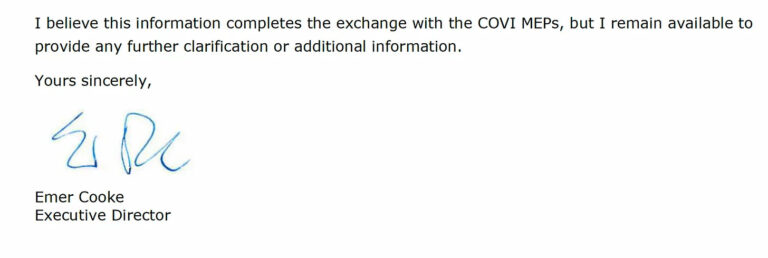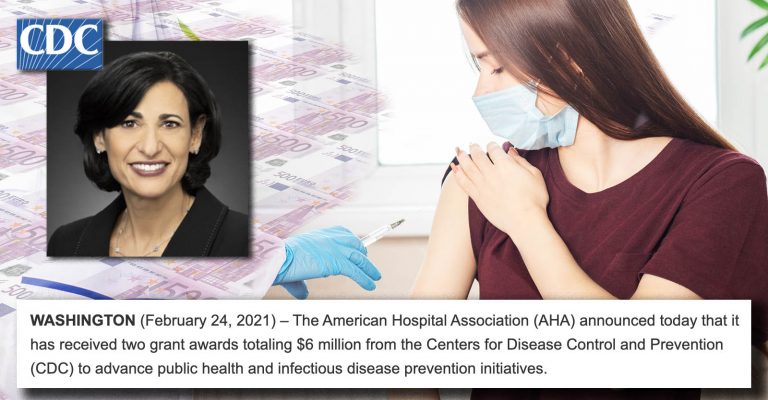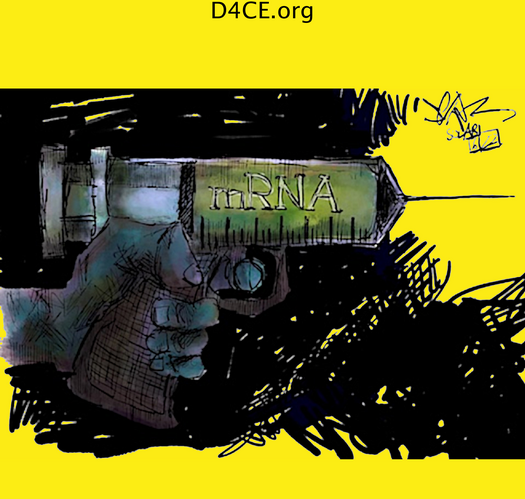The Proposed Amendments to the International Health Regulations: An Analysis
By Silvia Behrendt and Amrei Müller
Amendments to the International Health Regulations (2005) (IHR) are currently being discussed at the WHO. More than 300 amendments proposed by 16 states (some on behalf of regional groups and organisations), were collated by the WHO in the ‘Article-by-Article Compilation’ (AbAC) in November 2022. They have been reviewed by the Review Committee Regarding Amendments to the International Health Regulations (RC) which, in accordance with its mandate under Decision WHA.75(9), has issued technical recommendations on these amendments in a report (RC Report) published on 6 February 2023 for consideration by the Working Group on Amendments to the International Health Regulations (WGIHR).
Whilst these are, at the time of writing in February 2023, only proposals, some of which contradict each other and certainly not all of which will be adopted by the World Health Assembly (WHA), an analysis is warranted. So far, little public or legal academic discussion of these extensive amendments (and the parallel processes within the WHO of negotiating a new treaty on pandemic preparedness and response) has taken place. This is despite the fact that the outcomes of these processes have the potential to affect the livelihoods, lives, health and human rights of individuals around the world, inter alia because amendments proposed will, if adopted, give unique ‘emergency’ powers to the WHO and in particular its Director-General (DG), thereby entrenching the securitised approaches to managing infectious disease outbreaks embodied in the so-called Global Health Security (GHS) doctrine that has dominated the WHO-led global response to Covid-19 into international health law.
This is a human rights-based comment on selected proposed amendments, with a focus on amendments aiming to increase the WHO’s emergency and bio-surveillance powers, as well as amendments that aim to extend states’ duties to build ‘core capacities’ to detect, assess, notify and report events that could constitute public health emergencies of international concern (PHEICs) and to respond to PHEICs. Before this is done, and to avoid confusion, we shall briefly recall that two parallel processes are currently ongoing at the WHO-level aiming at reforming the international legal framework on which the global architecture for health emergency, preparedness, response and resilience (HERP) architecture is built.
Ongoing Parallel Processes to Revise the IHR and Negotiate a New Treaty on Pandemic Preparedness and Response
The first process ongoing at the WHO is the negotiation via the Intergovernmental Negotiation Body (INB) of a new treaty on pandemic preparedness and response. The most recent document issued by the INB on the 1 February 2023 is the Zero Draft of the WHO CA+. The second process is the revision of the existing international legal framework on health emergencies, preparedness and response, being the IHR. The work on the amendments is coordinated through the WGIHR. Both the INB and the WGIHR are sub-divisions of the WHA (see here (para. 2) and here (para. 3) respectively).
Both processes appear rushed. The aim is to have both the treaty text and the amendments to the IHR ready for adoption at the 77th WHA in May 2024 (see here (para. 2(a)) and here (para. 5) respectively). Negotiating a new multilateral treaty in less than three years is highly unusual. States were also only given 4 months to table amendments to the IHR, and the experts writing the RC Report (pp. 11, 15) criticised the short time frame within which the report had to be produced, posing limitations to their mandate.
At the same time, the envisaged relationship between the two instruments remains ambiguous. In their current form, there are substantive overlaps in almost all areas regulated, and it is unclear why the WHO and its member states are using resources to negotiate two international instruments with overlapping scope and content.
If adopted at the 77th WHA in May 2024 by simple majority vote and given the scope of Art. 21 of the Constitution of the WHO (WHOC), the amendments to the IHR will come into force within 12 months for all states, unless a state proactively files rejections or reservations within a 10-month period in accordance with the new versions of Arts. 59, 61 and 62 IHR which have been revised in 2022 (see Annex) and will enter into force in November 2023. Before the 2022 revision, states had 18 months to opt out of IHR amendments. This fast-track procedure for the entry into force of amendments will accelerate the revision process further.
The treaty, by contrast, is currently negotiated under Art. 19 WHOC. Once the treaty has been adopted by the WHA with a 2/3 majority vote, each WHO member state can sign and ratify the treaty in accordance with the procedures set out in their domestic law. Any legal regime adopted under Art. 19 WHOC will formally establish a new secretariat, which may or may not be hosted by the WHO. Unlike the Regulations adopted under Art. 21 WHOC, it establishes a treaty regime outside the WHO’s administration and can thus not provide new powers, rights or obligations to the WHO itself without further contractual arrangements (compare the 2003 Framework Convention on Tobacco Control and its Secretariat).
What follows is an analysis that focuses exclusively on the proposed amendments to the IHR.
Proposed Amendments to Increase the WHO’s Health Emergency and Bio-surveillance Powers
The proposed amendments to the IHR will, if adopted, considerably increase the WHO’s health emergency and bio-surveillance powers, and in particular those of its DG. There are primarily three proposed changes that point into this direction.
1. Expanding the Situations that Constitute a PHEIC
Currently, the DG advised by an Emergency Committee (EC) (Arts. 12(4)(c) and 49 IHR), has the power to declare a PHEIC in line with Arts. 12(1) and 1(1) IHR. A PHEIC is presently defined as an ‘extraordinary event’ in one state which is determined ‘to constitute a public health risk to other States through the international spread of disease and to potentially require a coordinated international response’.
The proposals seek to considerably extend the situations in which the DG can declare a public health emergency, triggering numerous legal and practical consequences (see below sections (2) and (3)). Proposals suggest giving the DG the authority to declare an ‘intermediate public health alert’ where a public health event does not meet the criteria of a PHEIC but ‘requires heightened international awareness and preparedness activity’; and that the DG and/or one of the WHO’s six Regional Directors can declare a Public Health Emergency of Regional Concern (PHERC) (pp. 9-10, 8). These proposals are similar to those that the US in its unilateral attempt to initiate a revision of the IHR already at the 75th WHA in May 2022 withdrew, due to considerable criticism voiced during the 75th WHA. It also appears to build on the already assumed power of the DG to determine a ‘pre-PHEIC’ under the WHO’s Emergency Use Listing Procedure (EULP) (p. 9) for the ‘approval’, manufacturing and application of investigational medical countermeasures ahead of an actual PHEIC. The RC Report is cautiously supportive of the introduction of an ‘intermediate health alert’ on the proposition that it gives the DG ‘another tool for bringing acute events to the attention of States Parties’ (p. 46).
Moreover, proposed amendments to the decision instrument in Annex 2 to the IHR which shall, among other things, guide the DG in his decision as to whether an event can be classified as a PHEIC (Art.12(4)(b) IHR) extended the list of events that by default activate reporting obligations (by National Focal Points within states) to the WHO to include ‘clusters of severe acute pneumonia of unknown cause’ and ‘clusters of other severe infections in which human to human transmission cannot be ruled out’ (p. 38). The question of whether such clusters pose a significant risk of international spread and of international travel and trade restrictions need not be evaluated, and how ‘severity’ is assessed remains unclear. The absence of a clear ‘severe’ or ‘life-threating’ disease benchmark defining a PHEIC to ensure that PHEIC declarations are only issued if we are indeed facing a severe health hazard deserving the highest level of alert justifying the far-reaching legal and practical consequences such a declaration can have on a global scale, are not addressed in any of the proposals for amendments. Developing such benchmarks in Art. 12 IHR and Annex 2 to be applied in accordance with the principle of proportionality would, however, be highly desirable to address the current flaws in the PHEIC concept, and to enable the timely termination of PHEICs.
Currently ongoing PHEICs all lack a high severity level, but are, on the other hand, not terminated due to the absence of clear severity criteria. The Covid-19-EC advised in its fourteenth meeting on 30 January 2023 that Covid-19 still constitutes a PHEIC despite the fact that the Infection Fatality Rate for SARS-CoV-2 is very low. By contrast, in the statement issued during the third meeting of the m-pox-EC, some members expressed their opinion that the event ‘did not and does not constitute a PHEIC’, presumably because of lack of severity of the disease, and, at the same time the m-pox-EC collectively recognised that ‘the criteria embedded in the definition of the PHEIC may not be adequate at this time to inform their advice to the WHO Director-General as to whether and when this PHEIC should be terminated.’ With regard to the PHEIC-concept and its termination, the RC Report (p. 48) only points to the possibility of the WHO converting ‘temporary recommendations’ into ‘standing recommendations’, as the latter can be issued independent of the existence of the PHEIC. Thereby, the RC is silent about the pressing need to integrate into the PHEIC concept qualitative benchmarks of severity of diseases and a default-system for its termination in case the respective diseases fall below the severity threshold and become equivalent in their pathology and prevalence to other endemic diseases.
2. Giving the WHO and its DG Global Legislative Health Emergency Powers
The second reason why the powers of the DG and the WHO may dramatically increase are proposed amendments that, if adopted, will transform the WHO and its DG (and the ECs they can set up) into a global health emergency legislator once the very same organisation and its DG has declared a PHEIC. This is indicated by proposals to potentially change the currently non-binding temporary and standing ‘recommendations’ on medical and/or non-medical countermeasures to address a PHEIC that the DG shall issue to WHO member states after consultation with the EC (Art. 12(2), 17, 48, 49 IHR) into binding recommendations. Amendments to Art. 1 IHR propose to remove the word ‘non-binding’ before ‘standing recommendations’ and ‘temporary recommendations’ (p.2), and a proposal for a new Art. 13A suggests that ‘States Parties recognise the WHO as the guidance and coordinating authority of international public health response during PHEICs and undertake to follow the WHO’s recommendations in their international public health response.’ (pp. 12-13).
If such changes permitting the WHO, its ECs and DG to issue legally binding instructions to states is adopted, they will have legislative powers which, with the exception of the UN Security Council acting under chapter VII of the UN Charter, no other UN organ or specialised UN agency has, let alone the DG of one of these specialised agencies. Given the content of the recommendations the DG/EC can issue, this will likely lead to conflicts between states’ human rights duties under international and regional human rights treaties and the DG’s (potentially) legally binding ‘recommendations’. It could be reminiscent of the UN Security Council resolutions obliging states to impose sanctions on individuals suspected of financing and promoting terrorism after 9/11 conflicting with states’ human rights duties, some of which were later adjudicated amongst each other by the ECtHR (e.g. here and here). Indicating that recommendations ‘may work better if they are not mandatory’ (p. 26), the RC Report advises against changing the legal nature of the recommendations.
3. Extending the Scope of the WHO’s Executive Emergency Powers
Many proposals for amendments aim to considerably expand the WHO’s institutional capacities (during a PHEIC) and its bio-surveillance capacities (at all times); and relatedly, also the scope and content of the (potentially binding) recommendations it can issue to states during a PHEIC. Among these are proposals for a new Art. 13A which suggests in general terms to make the WHO the lead ‘guidance and coordinating authority of international public health response during PHEICs’ (p. 12). This implies that the WHO shall build institutional capacities that enables it to
- carry out an ‘assessment of the availability and affordability of the health products’ required for responding to PHEICs, ‘including the potential increase in supply resulting from the surge and diversification of production’ (pp. 12, 13-14). Furthermore, ‘in cases of expected shortage of supply’, capacities to ‘develop an allocation plan for health products so as to ensure equitable access to people of all States Parties’ (p. 12), including by identifying and prioritising ‘recipients of health products, including health workers, frontline workers and vulnerable populations, and determine the required quantity of health care products for effective distribution to the recipients across States Parties’ (p. 12);
- ‘develop and maintain a database containing details of the ingredients, components, design, know-how, manufacturing process, or any other information required to facilitate health products required for responding to the potential PHEICs’ (pp. 12-13);
- ‘establish a repository of cell-lines to accelerate the production of similar biotherapeutics products and vaccines’ (p. 14);
- ‘develop appropriate regulatory guidelines for the rapid approval of health products of quality’ (p. 14);
- to (presumably) build institutional capacity to globally coordinate infodemic management, to ‘counter the dissemination of false and unreliable information about public health events, preventive and anti-epidemic measures and activities in the media, social networks and other ways of disseminating such information’ (pp. 23, 36);
- to develop a system through which ‘samples and genetic sequence data of pathogens capable of causing pandemic and epidemics or other high-risk situations’ (pp. 23, 34, 36) are shared; and
- to develop ‘an interoperability mechanism for secure global digital exchange of health information,’ (pp. 23, 7) including for digital health certificates and contact tracing.
It appears that many of the proposals aim to also extend the scope and content of the DG’s/EC’s recommendations they can issue during a PHEIC corresponding to these new institutional emergency powers. For example, proposed amendments to Art. 15(2) IHR indicate that recommendations shall be issued not only regarding ‘persons, baggage, cargo, containers, conveyances, goods and/or postal parcels to prevent or reduce the international spread of disease and avoid unnecessary interference with international traffic’ as is currently the case, but also ‘on the access and availability of health products, technologies, and know-how, including an allocation mechanism for their fair and equitable access’ (p. 14). More concretely, this may imply recommendations to ‘states parties with production capacities [… to] undertake measures to scale up production of health products’ and ‘supply the requested quantity of health products to the WHO or other State Parties as directed by the WHO in a timely manner in order to ensure effective implementation of the [WHO] allocation plan’ (pp. 12, 13); as well as recommendations to all states to permit ‘technology transfer’ (p. 12) to low-income countries, to waive IP protection (p. 12), and to prevent the spread of PHEIC-related ‘mis- and disinformation’ (p. 23).
The RC Report is critical of many of these proposed amendments. For example, the report concludes, regarding the proposal that the WHO develops regulatory guidelines for the rapid (emergency) approval of new medical products (diagnostics, therapeutics, vaccines) in response to PHEICs, that it ‘may be inadvisable from a legal perspective to require that the WHO develops such regulatory guidelines, as the liability in the event of a significant safety flaw that appears post-marketing of the product will then fall chiefly on the Organization’ (p. 54). Similarly, it observes that it may not be feasible, and may well exceed the scope of the WHO’s authority envisaged in the IHR for the WHO to carry out a global assessment of available health products and establish a global allocation mechanism for such products during a PHEIC and set up databases of raw materials and suppliers (pp. 53-54), and ‘arguably [even] exceed [… WHO’s] constitutional mandate’ (p. 55). On the other hand, the RC Report does not appear to have an opinion about proposals building the WHO’s institutional infodemic management capacities (pp. 70, 81), but supports the establishment of a digital interoperable system to share health information and allegedly the establishment of a global interoperable digital system to share genomic sequence data (p. 70).
The RC Report at least partly overlooks, however, that the WHO has, as a matter of fact, already built many of these institutional capacities, albeit that they currently function on a voluntary basis (frequently via public-private partnerships); and has issued far-reaching recommendations to state parties in the course of the on-going Covid-19-PHEIC and the m-pox-PHEIC, including on the issues proposed by the amendments. Among them are:
First, the WHO’s EULP through which it ‘approves for emergency use’ investigational medical products to address a PHEIC, including vaccines, and thereby enables their global distribution to and administration in countries with insufficient regulatory capacities. Very limited clinical trial data on efficacy and safety of an unlicensed medical product is required for an Emergency Use Listing (EUL) (p. 43). The ‘100 Days’ initiative led by one of the WHO’s influential public-private partner, CEPI, aiming to develop a vaccine within 100 days, ready for distribution and administration to the entire global population once a PHEIC has been declared, may also be ‘confirmed’ by the proposed amendments, and built upon once they are adopted.
Second, the WHO and its public-private partners are already running a global allocation mechanism for EUL medical products during a PHEIC through the Access to Covid-19 Tools (ACT-Accelerator) and, in particular, its vaccine pillar Covax, the Vaccine Delivery Partnership and the Dubai Logistics Hub.
Third, under its Emergencies Programme the WHO has established a so-called Infodemic unit, through which it enlightens states about what, in its opinion, amounts to health ‘mis- or disinformation’ concerning PHEICs. Among other things, it actively tracks social media end-to-end posts in real time in 30 countries and 9 different languages via the Early AI- supported Social Listening platform to rapidly identify spread of alleged misinformation.
Fourth, in the area of establishing an interoperable, digital system for the global sharing of genetic sequence data, the WHO’s existing ‘Global Genomic Surveillance Strategy for Pathogens with Pandemic and Epidemic Potential’ sets out goals and timeframe to establish such a global system.
Fifth, in the words of the DG, the WHO has already developed ‘a technical interoperability standard for COVID-19 certificates, which are now in use by over 120 countries, enabling over three billion people to use digitally augmented vaccine and test results.’ The WHO has, moreover, issued technical guidance in that area, and adopted, together with its Global Outbreak and Alert and Response System partners, the Go.Data tool for public health emergencies, which includes features for digital contact tracing, contact follow-up and visualising chains of transmission. These partnerships have been aligned with the WHO Global Health Strategy on Digital Health 2020-2025, which aims to ‘improve health for everyone, everywhere by accelerating the development and adoption of person-centric digital health solutions to prevent, detect and respond to epidemics and pandemics’.
Corresponding the WHO recommendations to state – for example on upscaling of production of investigational EUL vaccines, to vaccinate an increasing percentage of every countries’ population with such products, to counter (i.e. to de-bunk, pre-bunk or remove) health ‘mis- or disinformation’, to increase domestic genomic sequencing capacities, and to use digital vaccine certificates – have been issued over the last years extensively by both the Covid-19-EC and, more recently, the m-pox-EC.
Extending State Duties to Build ‘Core Capacities’
Many of the proposed amendments aim to reinforce existing, and add considerable new, duties on WHO member states to build ‘core capacities’ of surveillance to detect, assess, notify and report events that could constitute a PHEIC (or possibly a PHERC, or intermediate public health alert), ‘core capacities’ to respond to these ‘emergency’ events once they have been declared by the WHO, and ‘core capacities’ to control designated points of entry (airports, ports and ground border crossings). This is the logic counterpart to increasing the WHO’s capacities in the same areas to allow for functioning domestic components of a multi-level machinery for the global development, rapid emergency regulatory ‘approval’, production, distribution and administration of new medical products in response to PHEICs, the running of multi-level interoperable digital health certificate systems as well as a multi-level, digital and interoperable system for constant biomedical surveillance (including in non-PHEIC times).
Duties concerning ‘core capacities’ in surveillance to detect, assess, notify and then report public health events to the WHO that potentially constitute a PHEIC are expanded primarily via the proposed amendments to Arts. 5 and 19 IHR as well as Annex 1 to the IHR. Among them are, concerning various levels of domestic health systems, proposals to add to the ‘essential information’ concerning public health events that is to be reported to higher levels information on ‘microbial, epidemiological, clinical and genomic data’ (pp. 31, 33), relatedly, to build ‘laboratory networks including that for genomic sequencing and diagnostics to accurately identify the pathogen/other hazards’ (p. 32), as well as to ‘support timely exchange of biological materials and genetic sequence data to WHO, entities under WHO and other State Parties subject to equitable sharing of benefits therefrom’ (p. 34). The latter is also supported by proposed amendments to Arts. 6(2) and 7(2) IHR, calling for continuous provision of ‘genomic sequence data’ to the WHO once a health event that might potentially constitute a PHEIC has been reported by a state party to the WHO (pp. 5, 6). In line with the so-called ‘One Health’ concept, proposals also suggest that surveillance networks shall be able to ‘quickly detect public health events at human animal-environmental interface including zoonotic spills’ (p. 32). Though voicing some concern regarding feasibility, the RC Report is overall supportive of such amendments as they primarily constitute an IHR update ‘in line with technological advances’ (p. 80).
Corresponding to above-mentioned proposals aiming to transform the WHO into a global ‘approval’, procurement, allocation and coordination agency for (new) medical products during a PHEIC (and potentially a PHERC or intermediate health alert) are proposals for amendments that expand states’ duties to build core capacities also in the area of rapidly ‘research[ing], manufactur[ing] and deploy[ing …] medical countermeasures/health products to respond to a health event’ (p. 34, 31, 35) as well as capacities to ‘access and absorb technologies and knowhow for the production of health care products’ (p. 34) and logistical capacities to ensure timely availability of the latter (p. 34, 32, 31). Proposed amendments for a new Art. 13A further indicate that states shall develop production capacities that permit them to supply health products to the WHO so that the WHO can distribute them in accordance with its global allocation plan (p. 12). Other proposals for amendments refer to ‘core capacities’ to ‘leverage communication channels to communicate the risk, countering misinformation and disinformation’ (p. 33). Moreover, proposals for amendments suggest states to leverage globally interoperable digital technologies for building all these ‘core capacities’, i.e. for running ‘collaborative surveillance networks, forecasting, laboratory networks including that of genomic sequencing, health emergency response systems, supply chain management and risk communication’ (p. 33, 37). The RC Report is critical about many of these amendments. They constitute a considerable extension of state duties under the IHR, will raise feasibility issues, and, most prominently, are inconsistent with the current chapeau of Annex 2 to the IHR which links back to respective provisions in the IHR and thereby limits states’ duties ‘to core public health capacities, rather than all health system capacities’ (pp. 79, 80-82).
Concerning duties to build ‘core capacities’ to control designated points of entry with regard to the treatment of persons crossing borders during a PHEIC (or possibly PHERCs or intermediate health alerts) proposals for amendments of Art. 23 IHR suggest for possibilities of states to require health documents from travellers that contain information ‘in digital or physical format […] on a laboratory test for a pathogen and/or information on vaccination against a disease’ (p. 18). Further proposals suggest that travel health documents shall ‘preferably be produced in digital form’ and that efforts should be made by the WHA to adopt the ‘requirements that … documents shall fulfil with regard to the interoperability of information technology platforms, technical requirements of health documents as well as safeguards to reduce risk of abuse and falsification and to ensure the protection and security of personal data contained in such documents’ (p. 18). The RC Report appears moderately critical to such proposals as they ‘may overburden travellers, and may even raise ethical and discrimination-related concerns’ (p. 62), and because proposals concerning digital technologies will raise feasibility issues (p. 82).
In Place of a Conclusion: Missing Pieces
We shall conclude with highlighting a few issues not addressed in the proposals.
First, there is a general lack of engagement with the implications that many of the proposed amendments may, if adopted, have on the enjoyment of human rights as well as long fought-for standards of medical law aiming to ensure safety and efficacy of medical products.
For example, proposals will, if adopted, likely result in the extension and legal entrenchment of the WHO’s EULP through which unlicensed, investigational medical products are ‘emergency listed’, that is de facto ‘emergency approved’ for global production and administration once the DG has declared a PHEIC (or potentially a PHERC or an ‘intermediate health alert’); the extension and legal entrenchment of existing global allocation and distribution mechanisms like the ACT-Accelerator run by the WHO and its public-private partners; as well as the extension and legal entrenchment of WHO-EC-issued recommendations to, for example, administer these EUL products to gradually increasing percentages of all countries’ population, as has been the practice of the Covid-19-EC (for example, Recommendations 3 and 1). Other proposals will routinise the running a globally interoperable system for digital ‘health certificates’ for verification of vaccine status or test results, which will likely become a pre-condition for any cross-border travelling during a PHEIC, or if proposed amendments to Art. 23 IHR are taken on, even outside PHEICs (that is, at all times) (see RC Report, p. 62).
Such approaches are likely to lead to interferences with numerous human rights, among them the right to health (Art. 12, ICESCR), including the principle of informed consent and the right to access safe and effective medical products, as well as the right not to be subjected without free consent to medical or scientific experimentation which forms part of the prohibition of torture (Art. 7, ICCPR). Alleged violations of these rights resulting from WHO-led, GHS-informed global Covid-19 response centring on the global distribution and administration of investigational vaccines whose safety and efficacy has never been thoroughly proven (see here, here, here and here) are slowly becoming apparent (see here, here, here, here and here). Similarly, entrenching the WHO’s infodemic management activities via proposed amendments that the WHO continues to conduct during the on-going Covid-19-PHEIC interferes with, among others, the right to freedom of expression and to receive and impart information (Art. 19, ICCPR; Art. 10, ECHR), including health information and the rights to health and to science (Art. 15(1)(b), ICESCR). Infodemic management has suppressed many important debates, for example about the origin of SARS-CoV-2 (here, here and here), the negative effects of lockdowns, and effective treatment of Covid-19 with re-purposed, cheap drugs, including as an alternative (or at least complement) to a global vaccination campaign with investigational novel products (see here, here and here). The right to privacy (Art. 17, ICCPR; Art. 8, ECHR) and data protection concerns are given only scant consideration in the proposals for amendments, even though these concerns are indeed serious as they regard global digital sharing of health data, including genomic data, which is strictly protected under the rights to health and privacy (see here (para. 57) and here (para. 44)).
Second, as alluded to above, the proposals do not address the need for establishing a ‘severe’ or ‘life-threating’ disease benchmark in the definition of a PHEIC, among other things to enable a smooth termination of PHEICs. Relatedly, no proposals address the question of how the legal consequences of a PHEIC declaration shall be reversed upon the termination of a PHEIC. In particular, it remains unclear how unlicensed medical products that were rapidly ‘emergency listed’ by the WHO through its EULP during a PHEIC ‘may be taken off the EUL list […] immediately upon termination’ (p. 35) of a PHEIC. For example, taking the current EUL Covid-19 vaccines off the WHO emergency list once the Covid-19-PHEIC is finally terminated will imply a re-transition of the EUL vaccines into regular authorisation procedures which are much more demanding with respect to the required data from clinical trials to ensure their full efficacy and safety (p. 16), opening also concomitant questions of medical liability; and will not be a satisfactory solution for millions of pre-purchased EUL vaccines at the national level or for Covax. More generally, this problem points to a broader question about how safety and efficacy of EUL products will be ensured, and how significant or even minor safety flaws of these products shall be dealt with under the HERP architecture that is to be established through the proposed amendments of the IHR, including questions of liability of the WHO and its public-private partners invested in the vaccine business.
Third, questions of how to ensure accountability of the WHO, its DG and the ECs for the decisions to declare a specific ‘event’ a PHEIC, for the recommendations they issue to states and for other actions they put in motion in relation to the PHEIC, is not addressed in the proposed amendments. Given that the IHR amendments aim to further increase the emergency powers of the WHO, and given the WHO’s history of ties to the pharmaceutical industry, which is likely to benefit from every new PHEIC, and is (indirectly) involved in many of the WHO’s public-private partnerships, further thought should be given of how to ensure full accountability of the WHO and its public-private partners during a PHEIC.
Finally, many of the proposals to significantly extend state duties in regard to their ‘core capacities’ will potentially reshape domestic health systems and promote shifts in domestic health resource allocations towards pandemic surveillance, preparedness and response activities. This may conflict with health priorities democratic societies have set for themselves in implementing the human right to health within their local context reflecting locally specific disease burdens.
To conclude: this initial analysis of the proposed amendments may encourage those involved in the negotiation processes at the WHO to examine proposals also for their compatibility with states’ duties to respect, protect and fulfil human rights, including by ensuring that their membership in international organisations like the WHO does not prevent them from complying with these duties (see. here (para. 67), here (para. 144) and here (Art. 61)); and with the WHO’s own responsibilities for human rights under its Constitution, the current Art. 3(1) IHR and customary human rights law.
Originally published on OpinioJuris
Suggest a correction







